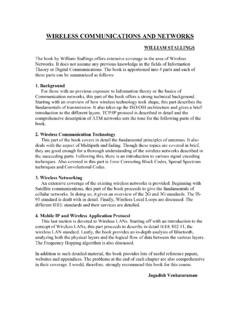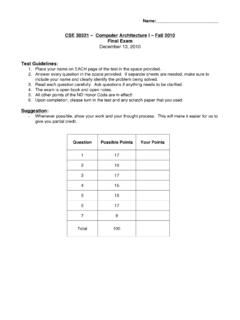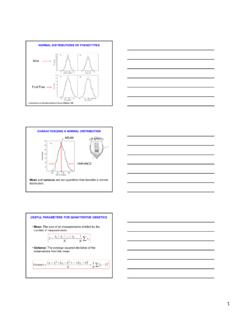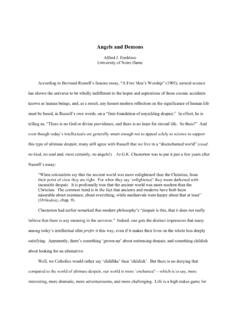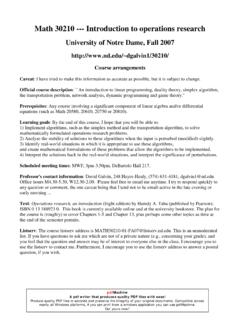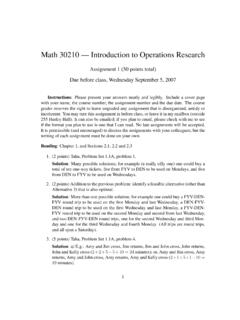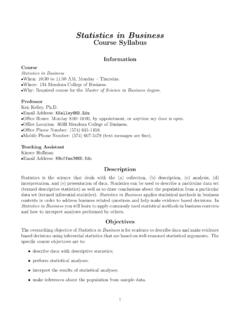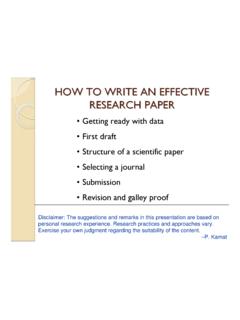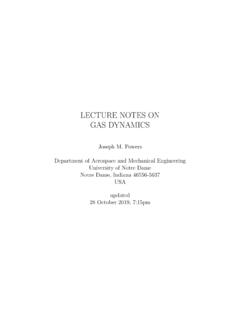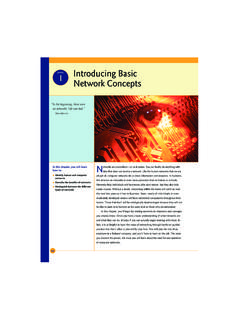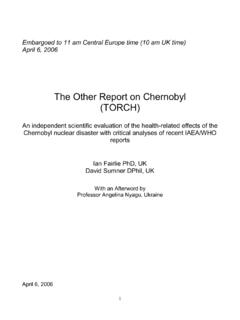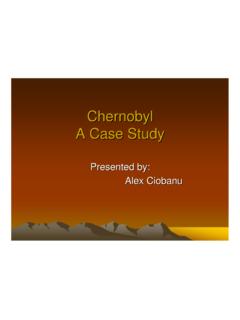Transcription of 4 Rights to know and the Fukushima, Chernobyl, and Three ...
1 C:/ITOOLS/WMS/CUP-NEW/6147622/WORKINGFOL DER/ [53 66] 2:00PM4 Rights to know and the Fukushima, chernobyl , and Three Mile Island accidents1 Kristin all democratic nations, international organizations, and labor andconsumer groups affirm the public s right to know any information thatcould cause serious harm. This negative right is a protection against anyperson or group who might attempt to withhold, misrepresent, or manip-ulate information that is necessary for people to protect themselves. Yet,official government, industry, and UN International Atomic Energy Agency(IAEA) pronouncements about the 2011 fukushima (Japan), 1986 chernobyl (Ukraine), and 1979 Three Mile Island (US) nuclear accidents have misrepresented information about the severity and consequences of allthese accidents. As a result, they have violated citizens Rights to know andtherefore likely increased the deathand injury rates associated with theseaccidents.
2 This (chapter (1) outlines the basic scientific-medical facts aboutthe Three nuclear accidents; (2) illustrates official IAEA government industry misrepresentation of accident-caused health harms at each loca-tion; (3) argues that mainly because of IAEA, government, and industrymisrepresentation of the accident harms, they violated citizens Rights toknow; and (4) suggests some of the reasons that this misrepresentation right to knowIn 2006 in Iceland, Sunshine Press began WikiLeaks, the internet non-profitorganization that publishes news leaks and secret or classified information. In2010, WikiLeaks achieved itsfirst great triumph whenThe New York Times,1 Parts of this chapter rely on K. Shrader-Frechette. 2012. Nuclear Catastrophe, Disaster-RelatedEnvironmental Injustice, and Justice5 (3): 133 139 and Shrader-Frechette, K.)
3 Will Work: Fighting Climate Change with Renewable Energy, NotNuclear York: Oxford University Press: 130 :/ITOOLS/WMS/CUP-NEW/6147622/WORKINGFOLD ER/ [53 66] 2:00 PMThe Guardian, Der Spiegel, Le Monde, andEl Pa spublished parts of secretmilitary cables between the US State Department and diplomats that documen-ted collateral murder, deaths of innocent civilians because of US wars in Iraqand Afghanistan. It also released classified videos showing US Army helicop-ters that killed journalists in the streets of Baghdad. In 2011 WikiLeakspublished damning secretfiles concerning treatment of detainees in theGuantanamo Bay prison. In 2012 it released millions of emails concerningthe Texas company Stratfor, which, for contracted fees, provides globalintelligence. In 2013 WikiLeaks published infamous cables from then-US-Secretary-of-State and later Nobel Laureate, Henry Kissinger, which confirmedhis unethical, illegal, and unconstitutional activities, especially in other nations(Roberts 2011).
4 In response to these WikiLeaks activities, a Norwegian politician claimed itsfounders had helped redraw the map of information freedom, and he nomi-nated them for the Nobel Peace Prize. Although the US government hasattempted to prosecute WikiLeaks officials, aNew York Timeseditorialaffirmed that people have a right to know what is being done in their name (Roberts 2011).Although ethicists and politicians may disagree about whether WikiLeaks leaders were justified in their attempts to protect citizens Rights to know , these Rights themselves are beyond dispute. They are a central part of demo-cratic theory, medical ethics, economic theory, and consumer policy. Rightsto know are essential if people and governments are to recognize the principleof autonomy, essential to personhood. They are also essential to personal orgovernmental assignment of praiseand blame, freedom or punishment,because autonomy is the capacity of a rational individual to make aninformed, uncoerced decision.
5 Hence for ethicists, autonomy is the mainbasis for determining moral responsibility and accountability for one sactions and and many ethicists likewise affirm that what creates the core of humandignity is autonomy, the ability to make one s own decisions, the ability toimpose an objective moral law on oneself. However, this ability is contingenton having full information and hence a right to know . Thus, according to basicethical theory, autonomy is necessary for human dignity and Rights to knoware necessary for autonomy. It thus follows that, when these Rights to know areviolated, human autonomy is jeopardized, as in the infamous Nazi medicalexperiments. This horrifying and exploitative experimental treatment ofJews, Roma, leftists, and politicalprisoners violated both the subjects phy-sical integrity and their personal autonomy because personal autonomyrequires that people have Rights to know what potentially harmful things aredone or will be done to them by others so that they can attempt to protectthemselves and to give or withhold Shrader-FrechetteC:/ITOOLS/WMS/CUP-NEW/6 147622/WORKINGFOLDER/ [53 66] 2:00 PMIn international human Rights law andin biomedical ethics, autonomy istypically understood as self-determination, and self-determination obviouslyrequires Rights to know the potential risks and harms that others mightimpose on oneself ( Merlo et al.)
6 2007). However, because no Rights areabsolute, completely unfettered by considerations such as claims to otherrights ( Richardson 2004), all Rights areprima facie. That is, they put theburden of proof on the potential violator, but they can sometimes be over-ridden by more important duties or considerations. Thus the exercise ofrights, including Rights to know , always requiresultima is why a citizen might haveultima facierights to know what chemicalssome industry is releasing in his neighborhood, but a criminal might nothaveultima facierights to know the address of witnesses who have testifiedagainst him in to know about nuclear-accident threatsBecause both international and national law, at least in democratic societies,recognize Rights to know pollutant harms imposed on citizens, often for theprofit of polluters ( US Environmental Protection Agency [EPA] 2013),no ethics justification is required to affirm thisultima facieright.
7 Indeed,virtually all democratic societies affirm the specific right to know of com-munity members who might be threatened by releases of toxins (Ashford andCaldart 1996, 2008). Because these Rights are often necessary to protect lives,health, and personal autonomy, it is difficult to imagine many circumstancesin which Rights to know environmental harms can be overridden exceptperhaps in cases in which full disclosure might cause mass panic and thuseven greater numbers of , the IAEA, affiliated with the UN and charged with both promotingnuclear energy and protecting people from it, explicitly affirms the public sright to know about nuclear-related harm. In the face of radiological threats andreactor accidents, it explicitly affirms the public s right to know (IAEA 2002: 3;2012: 16).Given the clear defensibility of Rights to know about environmental threatsto life, given explicit, self-imposed IAEA mandates to recognize the rightsto know of the public, and given IAEA duties to monitor and correct thenuclear-related behavior of both industry and nation-states, has the IAEA kept its word?
8 Has it recognized and protected citizens Rights to know aboutthreats posed by nuclear accidents? Consider the 2011 fukushima (Japan), the1986 chernobyl (Ukraine), and the 1979 Three Mile Island (USA) nuclearaccidents. The remainder of this (chapter (1) outlines each of these Three cata-strophes, (2) reveals the erroneous government, industry, and IAEA informationabout these accidents, (3) argues that this nuclear disinformation has violated55 fukushima , chernobyl , and Three Mile Island accidentsC:/ITOOLS/WMS/CUP-NEW/6147622/W ORKINGFOLDER/ [53 66] 2:00 PMnuclear victims Rights to know , and (4) suggests some of the reasons that mightexplain these violations. Considerfirst the Japanese nuclear 2011 fukushima , Japan accidentUntil March 11, 2011 atomic energy supplied about 30 percent of Japaneseelectricity.)
9 By May 2012, all Japanese commercial nuclear reactors were closed(Inaiima and Okada 2012). Despite massive citizen protests, some began to goback online (Associated Press 2012). By mid-2013, however, only twoJapanese reactors were operating (Koike et al. 2013). What happened?Beginning on March 11, 2011, multiple earthquakes and a tsunami hitJapan. They left nearly 16,000 dead; more than 3,000 missing; more than6,000 injured; and still more to die from radiation-induced cancer fromdamaged Japanese nuclear reactors (Johnston 2012). Afterflooding cut cool-ing water to the fukushima Daiichi reactors, radioactive fuel pools, nuclearplantfires, Three reactor meltdowns, extremely intense radioactive releases,and at least four explosions occurred. They spewed radioactive contamina-tion around the globe.
10 Roofs and walls blew off several reactors. Gapingholes appeared in radioactive containment. Nuclear fuel melted through thicksteel-and-concrete reactor bottoms. Plant radiation doses soared to500 millisievert (mSv)/hour, roughly a million times higher than normalbackground radiation. Data from the United Nations International Agencyfor Research on Cancer (IARC) predict that after only two hours, these doseswould cause all the cancers of those exposed. Massachusetts Institute ofTechnology (MIT) nuclear engineering PhD, Kenichi Ohmae says that from the amount offission material released and from the size of thehydrogen explosions, the core melts and containment catastrophes were undeniable. Yet, the Japanese government denied the meltdowns forthree months and denied radioactive-containment destruction for six months(Ohmae 2012).
